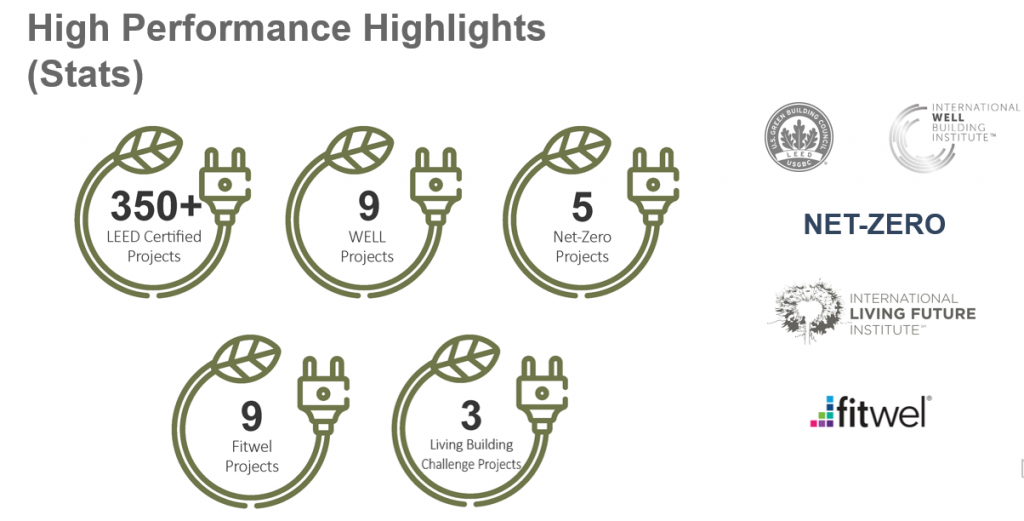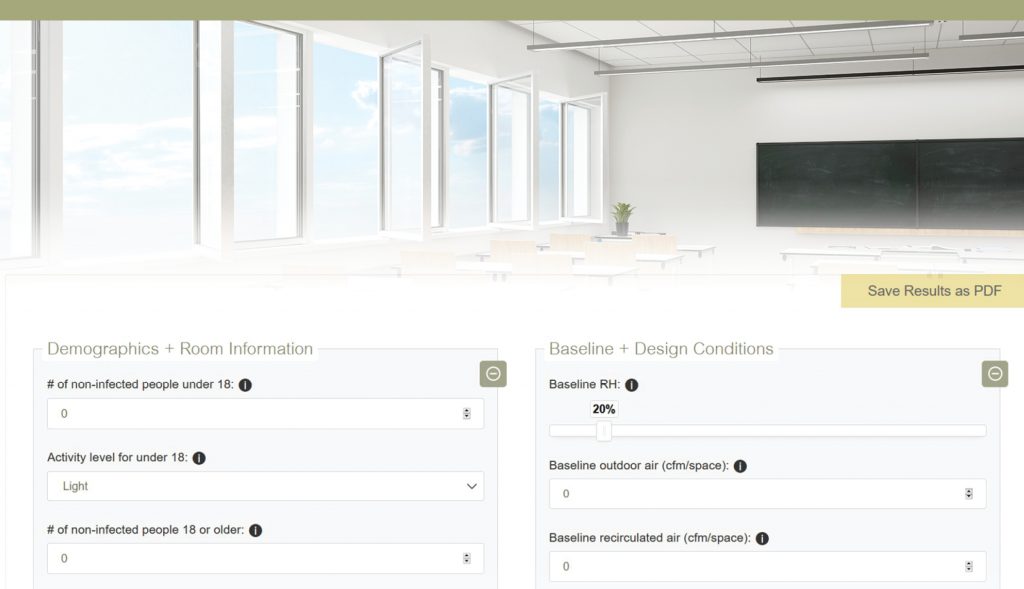BranchPattern Assists Federal Programs in Recovery, Looks to Future
- Perspectives
As business and social interaction ground to a halt in 2020, Americans found themselves in the middle of a global pandemic, looking for answers in a health crisis not seen for generations. With the assistance of the federal government, three federally funded bills helped many Americans and American businesses stay afloat as COVID-19 was studied and understood. These bills included:
| Federal Bill | Date Passed | Total Appropriation |
| CARES Act | March 27, 2020 | $2.2 Trillion |
| December Relief Act | December 27, 2020 | $900 Billion |
| American Rescue Plan Act | March 11, 2021 | $1.9 Trillion |
However, there were more to these bills than just stimulus checks and paycheck protection. The most recent bill to pass, The American Rescue Plan Act, provided $122 billion for facility improvements to schools. This plan’s intent was to create healthy, resilient facilities for students and promote reduced energy costs and emissions.
Through this program, BranchPattern has been heavily involved in assisting our school district partners with improvements to student learning. By incorporating our Facility Infection Risk EstimatorTM tool, we have educated district personnel and implemented strategies that reduce viral transmissions by improving indoor air quality and updating inefficient equipment.
Recovery: A Focus on Infrastructure and “Building Back Better”
Currently being considered by Congress is the “American Jobs Plan” (AJP). This plan, introduced by the Biden Administration in March of 2021, requests $2 trillion over eight years to modernize the nation’s infrastructure, including roads, bridges, and ports. It also addresses resiliency, the climate crisis, broadband access, waterways, and housing.
“The AJP is an investment in America that will create millions of good jobs, rebuild our country’s infrastructure, and position the United States to out-compete China. The AJP will invest in America in a way we have not invested since we built the interstate highways and won the Space Race.
…Like great projects of the past, the President’s plan will unify and mobilize the country to meet the great challenges of our time: the climate crisis…”
Specifically, the AJP includes:
- Fixing highways, rebuilding bridges, upgrading ports, airports and transit systems
- Delivering clean drinking water, a renewed electric grid, and high-speed broadband to all Americans
- Building, preserving, and retrofitting more than two million homes and commercial buildings, modernizing our nation’s schools and childcare facilities, and upgrading veterans’ hospitals and federal buildings
- Solidifying the infrastructure of our care economy by creating jobs and raising wages and benefits for essential home care workers
- Revitalizing manufacturing, securing U.S. supply chains, investing in R&D, and training Americans for the jobs of the future
- Creating good-quality jobs that pay prevailing wages in safe and healthy workplaces while ensuring workers have a free and fair choice to organize, join a union, and bargain collectively with their employers
The federal government has also set aggressive sustainability and energy efficiency goals and initiatives, including:
- 100% Reducing fossil-fuel-generated energy consumption reduction by 2030
- Managing water from 95th percentile rain events onsite
- Applying sustainable design principles to siting, design, and construction
(Source: https://www.gsa.gov/governmentwide-initiatives/climate-action-and-sustainability#buildings)

Standing on the Shoulders of Progress
The BranchPattern team is keeping a sharp eye on the developments of the AJP while President Biden continues to make his pitch to the American people. During this time we are reminded of the progress made by the government to advance sustainability and efficiency initiatives over the last 20 years, and we are excited for the potential of things to come.
The Federal Government is seen as a pioneer and leader in sustainability and wellness initiatives. We have always answered the call to help federal agencies achieve energy reduction through high-performance sustainable design and create spaces optimized for occupant comfort. These are among the main services at the forefront of our practice.
Over the past two decades, the engineers and building consultants at BranchPattern have worked with several agencies to improve occupant health and wellness in the built environment through our approach to design, renovation, commissioning of new facilities, and retro-commissioning of existing facilities. Agencies we have worked with include, but are not limited to, General Services Administration (GSA), Department of Homeland Security (DHS), Department of Defense (DOD), National Parks Service (NPS), Drug Enforcement Agency (DEA), Social Security Administration (SSA), and the Federal Bureau of Investigation (FBI). These experiences have lead to several high-performance achievements for our clients, in both the public and private sectors:

American Recovery and Reinvestment Act (ARRA)
In 2009, when the Obama Administration enacted ARRA, BranchPattern was there to answer the call.
According to fcc.gov, ARRA was “an unprecedented effort to jumpstart our economy, create or save millions of jobs, and put a down payment on addressing long-neglected challenges so our country can thrive in the 21st century. The Act (was) an extraordinary response to a crisis unlike any since the Great Depression, and included measures to modernize our nation’s infrastructure, enhance energy independence, expand educational opportunities, preserve and improve affordable health care, provide tax relief, and protect those in greatest need.”

Our team helped upgrade 35 million+ square feet of building space, and achieve 25-35% in energy reductions throughout 9 of 11 GSA regions. This work included several firsts for the GSA, including:
- First Geo-thermal heat pump systems in 2003 for the DHS
- First time ethnographic methods were incorporated into the 2009 retro-commissioning of the Conrad B. Duberstein U.S. Bankruptcy Courthouse in Brooklyn, NY
- First Net-Zero Certification of a federal project in 2015 on the Wayne N. Aspinall Federal Building and US Courthouse in Grand Junction, CO (Bonus: First-ever Historic Net-Zero Federal Project)
Under Energy Savings Performance Contracts with the DOE, our firm worked with 5 ESPC firms to upgrade 20 million square feet with $185M of private funds in GSA Regions 2, 4, 6 and 9 from 2014-2018.

The Birth of the Health and Productivity Performance Estimator™ (happē™)
As a result of our work with the GSA in retro-commissioning projects, our happē™ tool was born. The tool provides quantitative estimates of the impacts on productivity and health resulting from various Indoor Environmental Quality (IEQ) conditions, such as temperature, relative humidity, air quality, lighting quality, and sound quality.

Based on decades of IEQ peer reviewed research, happē™ provides both percentage impacts and dollar amounts using weighted average salary dollars. The initial driver for its development was a desire to incorporate quantitative impacts on health and productivity into the Return on Investment (ROI) analyses of the individual Enterprise Content Management (ECM) systems we were proposing as part of the GSA retro-commissioning work.
Since then, existing modules are periodically updated based on new research, and new modules are added to address client and occupant needs. These modules can assess a variety of inputs, such as assessing the productivity impacts of daylight access and glare, assessing the cognitive performance impacts due to CO2 levels, and estimating the probability of Influenza A infection resulting from different space conditions.
“We’ve found that quantifying productivity and health drives the decision-making process to be more inclusive of features impacting wellness, energy efficiency, and sustainability in general. It’s an important tool of our D.I.V.E. Project Framework®, used in conjunction with our other building performance modeling services, happē™ increases our ability to maximize both the human experience and environmental stewardship, and to Improve Life through Better Built Environments®,” said Marcel Harmon, associate principal.

Our latest happē™ module is the Facility Infection Risk EstimatorTM, a web application tool designed to help estimate the aerosol viral particle removal efficiency of several different removal mechanisms and calculate the associated probability of infection for adults and children, given a set of input conditions including space parameters, demographic factors, and time.

SIN(s): 541330ENG; 541690E; 541420; 541990AV
Looking Ahead
Having been named a GSA Contract Holder, we are excited for the potential and opportunities of federal projects in 2021 and beyond. By re-energizing partnerships with government entities, being on the GSA schedule as a contract holder, and continuing to develop our service offerings, BranchPattern will continue to meet client needs regarding carbon, sustainability, energy and climate goals. Thanks to working with the federal government, we have created best practices and lessons learned which have fueled year-over-year growth and helped us be better advocates to our clients in healthcare, education, and commercial real-estate.
This knowledge has allowed us to help clients, private and public, reach facility goals with experience in:
- Occupant Health and Wellness
- Sustainability Planning, especially through the LEED® certification program
- WELL® and FITWEL® ambassadors and advocates in building certifications
- The happē™ tool and Facility Infection Risk EstimatorTM


